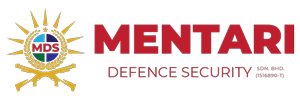In today’s rapidly changing world, businesses face an array of security challenges that can significantly impact their operations and bottom line. From cyber threats to physical vulnerabilities, it is crucial for organizations to adopt a proactive and comprehensive approach to security preparedness. In this article, we explore the art of preparedness and unveil the key steps to creating a resilient security plan that can safeguard your business against potential risks and threats.
1. Risk Assessment – Identifying Vulnerabilities: The foundation of any robust security plan is a thorough risk assessment. Take the time to evaluate your business’s assets, operations, and processes to identify potential vulnerabilities. This includes physical assets, data and information systems, supply chains, and personnel. Understanding the specific risks your business faces will inform the subsequent steps in your security preparedness strategy.
2. Security Policy and Procedure Development: With a clear understanding of your business’s risks, establish comprehensive security policies and procedures. These guidelines should encompass access control, data protection, incident reporting, and employee security awareness training. Communicate these policies throughout the organization to ensure everyone is aligned with the security objectives.
3. Cybersecurity – Safeguarding Digital Assets: In an increasingly digital landscape, cybersecurity is paramount. Implement robust cybersecurity measures, including firewalls, encryption, regular software updates, and employee training on recognizing and reporting cyber threats like phishing attempts. Regularly assess your digital defenses to stay ahead of evolving cyber risks.
4. Physical Security – Protecting Your Premises: Physical security measures are essential to protect your business premises, employees, and valuable assets. Consider installing access control systems, surveillance cameras, and alarm systems. Conduct regular security audits to identify potential weaknesses and implement measures to address them.
5. Crisis Management and Response Plan: Prepare your organization for worst-case scenarios by developing a crisis management and response plan. Assign roles and responsibilities to key personnel, establish communication protocols, and create contingency plans for various emergencies. A well-rehearsed response plan can minimize the impact of crises and aid in swift recovery.
6. Regular Training and Drills: Consistent training and drills are critical to ensuring that employees are well-prepared to respond effectively to security incidents. Conduct simulated exercises for various scenarios, such as fire evacuations, cyber breaches, or intruder scenarios. These practical exercises will increase the confidence and competence of your team in handling emergencies.
7. Access Control and Visitor Management: Controlled access to your premises is essential in preventing unauthorized entry. Implement access control measures, such as key cards or biometric authentication, to limit access to sensitive areas. Additionally, establish a robust visitor management system to track and monitor all visitors to your premises.
8. Supply Chain Security: Extend your security preparedness to include your supply chain partners. Collaborate with suppliers and service providers to ensure they adhere to security standards and best practices. A strong supply chain security approach will help protect your business from vulnerabilities that could arise from external sources.
9. Data Backup and Business Continuity: Plan for business continuity by regularly backing up critical data and systems. In case of a security breach or other disruptions, having reliable data backups and recovery strategies will enable your business to recover faster and minimize downtime.
10. Continuous Improvement: Security preparedness is an ongoing process. Regularly review and update your security plan to adapt to new risks and emerging threats. Stay informed about the latest security technologies and best practices, and be willing to invest in necessary upgrades and improvements.
By embracing the art of preparedness, your business can proactively fortify its security posture and confidently navigate the ever-changing security landscape. At Mentari Defence Security Sdn. Bhd., we are dedicated to helping businesses develop and implement resilient security plans that protect their most valuable assets and ensure a secure future.
Meta Title (SEO): “The Art of Preparedness: Building a Resilient Security Plan | [Your Company Name]”
Meta Description (SEO): Discover the essential steps to develop a robust security plan for your business. From risk assessment to crisis management, learn how [Your Company Name] can help fortify your organization against potential threats.



No comment